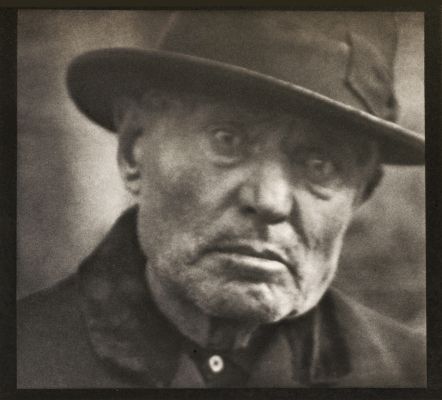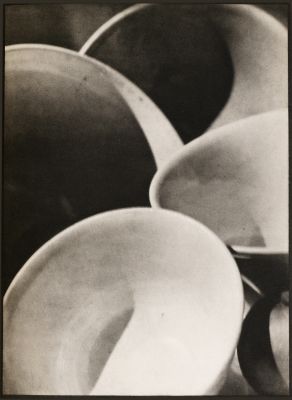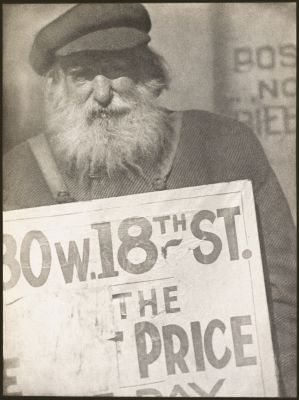
Title
Photograph – New YorkArtist
Strand, Paul (American, 1890-1976)Key FigurePublication
Camera Work XLIX/LDate
1917Process
PhotogravureImage Size
16.5 x 21.4 cm
“In 1915 I really became a photographer. I had been photographing seriously for eight years and suddenly there came that strange leap into greater knowledge and sureness.” – Paul Strand
By 1917 Paul Strand (1890-1976) had made photographs more advanced than anything his colleagues with cameras had achieved at the time. His pictures had impact not just because they were trumpeted by art impresario Alfred Stieglitz but also because they were tough, surprising, and had intrinsic weight. Curiously mixing suavity and grit, the photographs were an unexpected knockout by a homegrown twenty-seven-year-old no one had known as a contender. In an undeniable demonstration of cumulative mastery, Strand captured the movement of life in the city, a central interest of contemporary artists.
Strand approached anything new as an opportunity to learn more about human nature and as a challenge to generate personal growth. If the new contradicted his current stance, in his early career Strand proceeded as if guided by the words of the German poet Rainer Maris Rilke: “Stretch your practiced powers til they reach between two contradictions.”
The hard work of observation in Rilke’s poetry… expressed the experience of a cultural threshold at the end of the nineteenth century and the beginning of the twentieth. It was an extended moment of change when the grounded realism of the nineteenth century gave way to a flood of romantic feeling that in turn called out for structure, eliciting the various and rigorous formal experiments of modernism. The formative influences in young Paul Strand’s life were likewise charged with consciousness of the threshold experience. All around him people were working to dissolve the vestiges of an older regime, with its binding traditions of reason and class, to create a modern open society for the greater good of mankind. For Strand the two thresholds were one and the same; the changes that brought about modern art and progressive society were but two sides of the same coin. [1]
Reproduced / Exhibited
Greenough, Sarah, and William C. Agee. Modern Art and America: Alfred Stieglitz and His New York Galleries ; [catalog of an Exhibition Held at the National Gallery of Art, Washington, D.C., 28 January – 22 April 2001]. Washington: National Gallery of Art, 2000. no. 80.
Roberts, Pam. Photohistorica: Landmarks in Photography : Rare Images from the Collection of the Royal Photographic Society. New York: Artisan, 2000 p. 271
References
[1] Paul Strand: Circa 1916, The Metropolitan Museum of Art, New York, Maria Morris Hambourg, 1998









